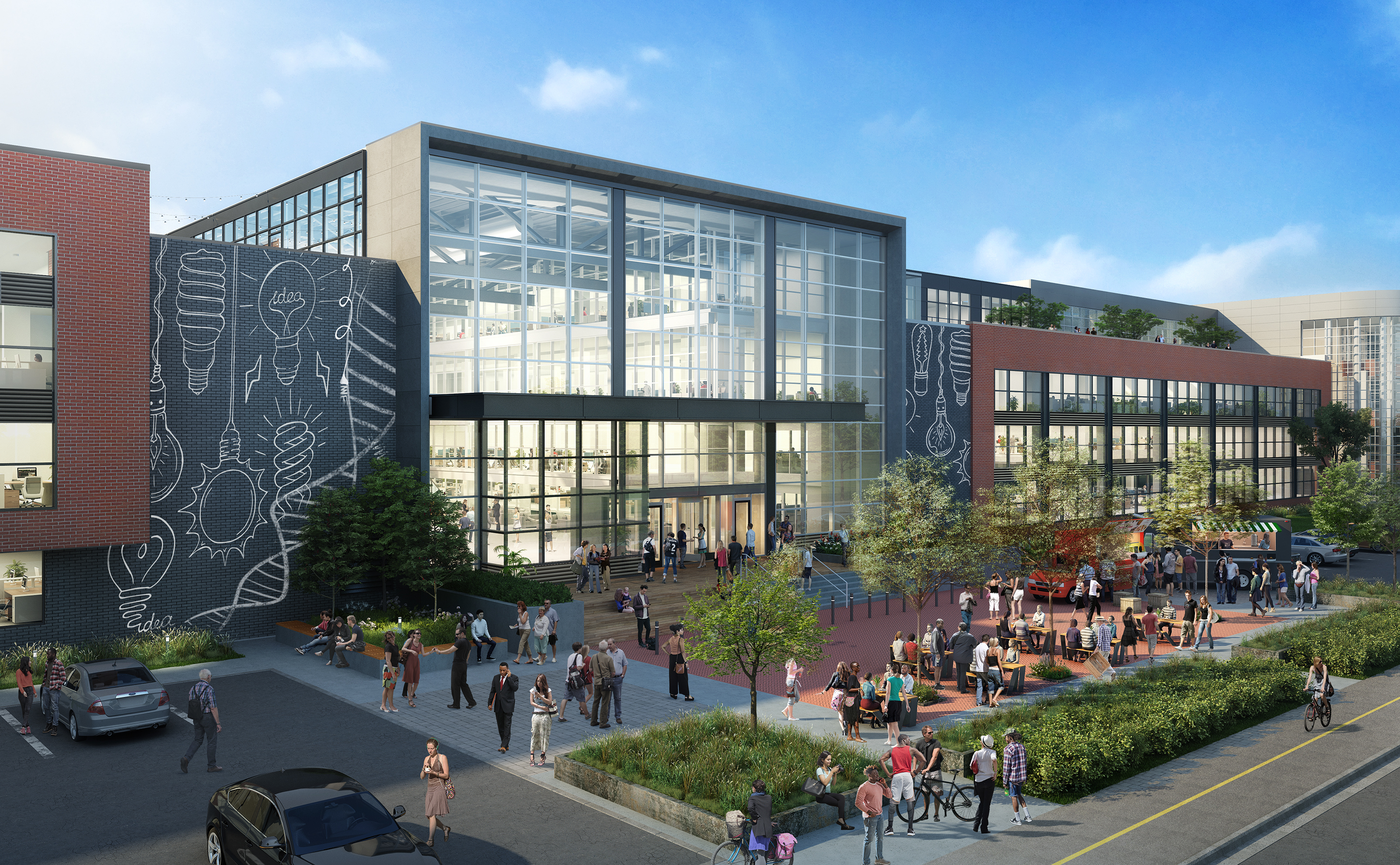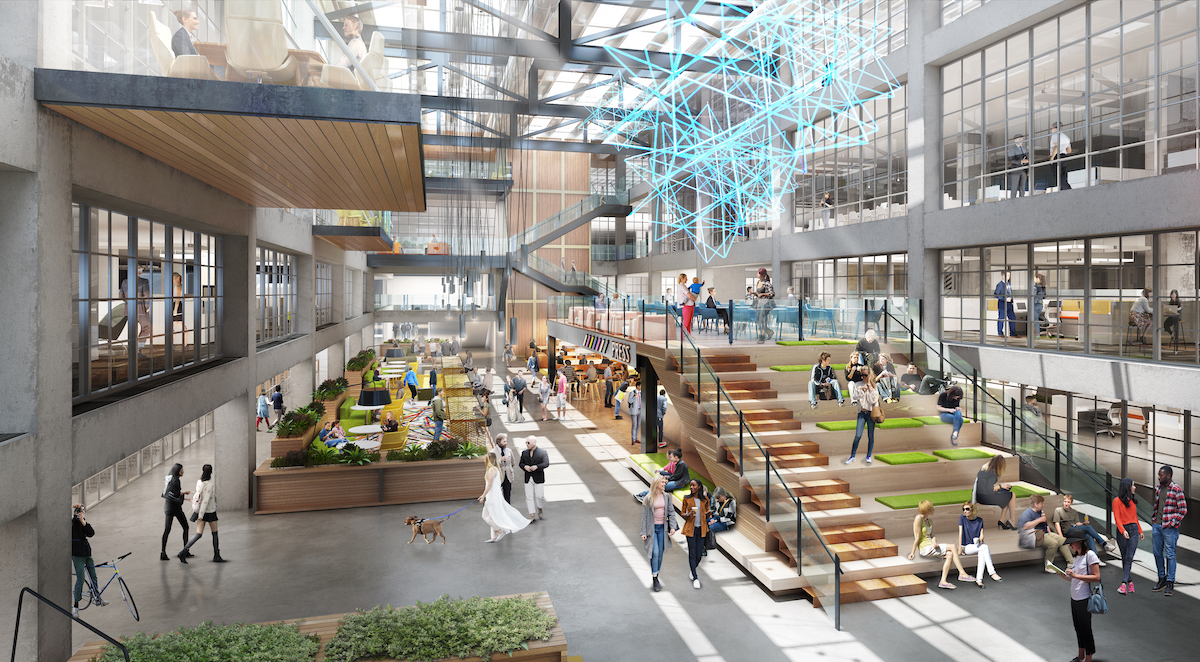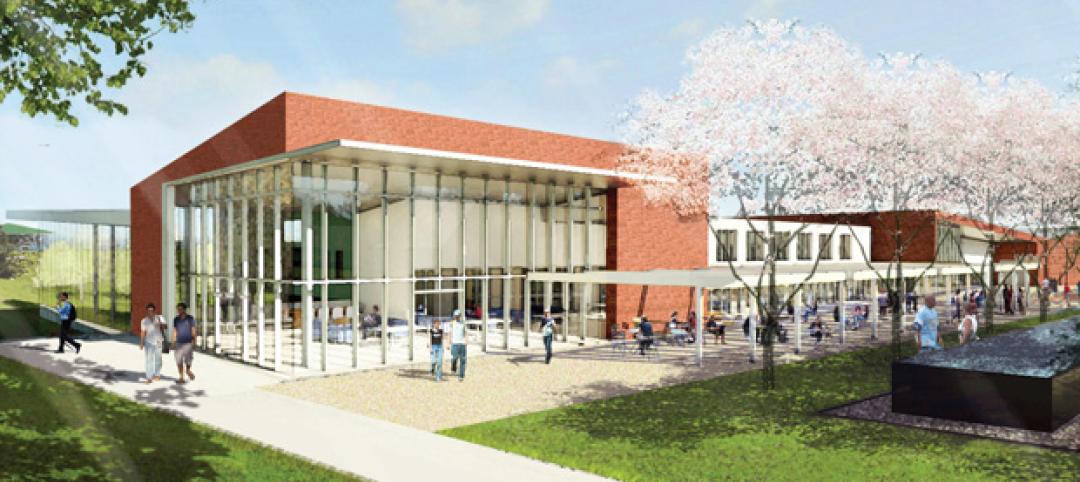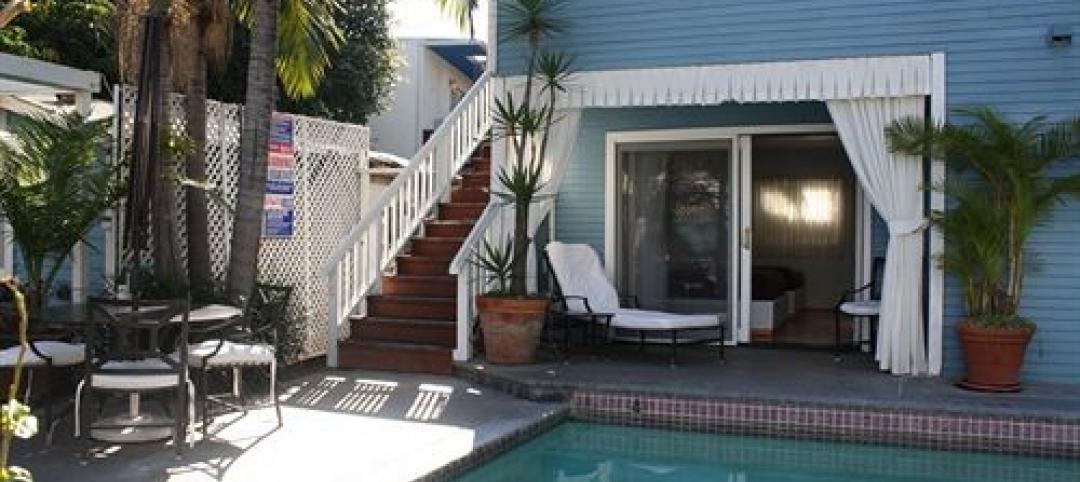The spread of the coronavirus has had a devastating impact on the U.S. and worldwide economies. But that spread also created health and wellness scenarios for the built environment that lend themselves to reconstruction and renovation, say AEC firms.
“I anticipate an increase in renovation/reconstruction as buildings are adapted to COVID-required standards,” says Guy Geier, FAIA, FIIDA, LEED AP, Managing Partner with FXCollaborative.
Darren Burns, a Vice President at Stantec’s office in Vancouver, B.C., says many of his firm’s clients are “redefining normal.” And those that are financially strong are positioned to take advantage of a distressed market.
“Long-term, we see a reset from traditional thinking around work-at-home opportunities and the reality of the traditional office,” says Burns. “All sectors will be looking to adapt and prioritize health and safety. We believe the reconstruction market will grow in strength as we look to creatively adapt and reuse ‘leftover’ spaces into a new purpose.”
Such adaptations, say AEC sources, are likely to include improvements in buildings’ technology infrastructure, as well as their HVAC systems with better air filtration and the functionality to let in more outdoor air.
DPR Construction is among the firms that are also seeing increases in requests for “all things touchless,” says Scott Sass, DPR’s Special Services Group Leader, ranging from automatic door openers, occupancy sensor light controls, and touchless kitchen and breakroom equipment.
Adaptive reuse might drive the reconstruction recovery
Just how quickly the demand for reconstruction recovers, though, is a matter of debate. Burns points out that, unlike previous recessions, the recent retraction in new development is primarily the result of uncertainty about future revenue streams and financing. “This could set us up for a slingshot recovery, if the stimulus spending heavily overlaps with a return to normalized commercial markets,” he speculates.
Sass says DPR saw a slowdown in office reconstruction projects, as developers were waiting for more certain guidelines from government and health agencies. His firm, though, expects reconstruction, in general, to see an increase in demand, “as many customers are making due with what they have, and are putting off major capital expenditures.”

One of McCarthy Building Companies’ recent reconstruction projects is the 120,000-sf, two-story St. Louis Aquarium at Union Station, that’s built inside the footprint of a 19th-Century iron umbrella train shed. The aquarium, which was designed by PGAV Destinations and completed last November, includes a 250,000-gallon shark habitat and five overhead viewing areas. Photo: Sam Fentress Photos
AEC firms are concerned about their clients’ abilities to locate financing to initiate reconstruction projects. FXCollaborative’s Geier thinks this could create an aggressively competitive bidding environment that leads to lower construction costs.
John Buescher, McCarthy Building Companies’ Central Region President in St. Louis, cautions that projects put on hold when the COVID-19 crisis began could stay delayed till early next year. Until political and economic climates stabilize, clients “are more likely to make conventional, low-risk real estate decisions,” he says. Even projects moving forward must contend with product and labor shortages, construction financing issues, and potential delivery delays.
Still, McCarthy is projecting “strong demand” for the reuse of existing buildings, be they office renovations or the repurposing of historic buildings. One of McCarthy’s recent reconstruction projects was the St. Louis Aquarium at Union Station, a 120,000-sf, two-story attraction built within the footprint of a 19th-century iron-umbrella train shed. The PGAV Destinations-designed aquarium is a signature element of the $187 million redevelopment of St. Louis Union Station, a National Landmark structure that Lodging Hospitality Management (its owner since 2012) has been transforming into a family entertainment and tourist destination.
The reconstruction beat goes on in Boston
While COVID-19 has consumed the AEC and development worlds, it isn’t the only trend that’s prevalent in reconstruction.
More firms, for example, are considering alternative building materials and delivery systems for these projects. Stantec and McCarthy are among those that have turned to prefabrication and modular construction to get projects completed faster, improve the quality control of that reconstruction, support jobsite health and safety requirements, and ensure efficiency at a time when labor availability remains dicey in some markets.

The Building Team for the BEAT office and industrial project includes Stantec and ADD Inc. (architects), Norblom Company (developer), Copley Wolf Design (landscape architect), and AHA Consulting Engineers and McNamara Salvia (engineers). Courtesy Stantec
Stantec’s Burns adds that, in many markets, mass timber continues to grow as a building product of choice because of its low-carbon, lighter-weight properties. “New approaches to building systems will be critical as we navigate the importance of healthy building environments, post pandemic,” he says.
To that point, one of the more prominent projects under construction is the $930 million reconstruction of Key Arena in Seattle, which when it reopens next summer will be home to the WNBA’s Seattle Storm and an NHL franchise. In June, Amazon bought the naming rights and will call the building Climate Pledge Arena. It will be the first net-zero-carbon-certified arena in the world. (The building team includes design partner Populous, project manager ICON, construction partner Mortenson, and Rockwell Group, which designed the building’s seven amenity spaces.)
DPR is seeing a “big move” toward reconstruction that makes buildings smarter, says Sass, by increasing monitoring, automation, and the controllability of equipment and fixtures. He adds that the smart-building movement is driving an increase in low-voltage and network systems in buildings to handle the demand for wired and wireless networks.
In Dorchester, Mass., Stantec and developer Nordblom Co. are repositioning the 16.6-acre former Boston Globe headquarters into a 750,000-sf multi-tenant mixed-use innovation hub called “The BEAT” (for Boston Exchange for Accelerated Technology).
ALSO SEE: The future is a numbers game for retail and restaurants

CallisonRTKL designed Canada’s first 5G-ready store, Rogers 302, a technology retail hub and flexible event space that allows for immersive, digitally enabled experiences. Photo: Richard Caden Photography, courtesy CallisonRTKL Read the article
The BEAT will contain 360,000 sf of office space, 300,000 sf of flex/industrial space, retail, a 10,000-sf fitness center, 868 parking spaces, and 200-plus bike storage spaces. A multimode path is planned to connect the site to transit lines and adjacent neighborhoods. Burns notes that Stantec and Nordblom capitalized on maintaining the existing building to accelerate preconstruction and to retain the building’s character and history.
The $300 million reconstruction, which is slated for completion late this year, will include a ground-floor microbrewery and 100-seat restaurant, as well as several outdoor spaces for work and play surrounding the buildings, such as a rooftop coworking lounge by day and movie bar by night, and a “backyard” for tenants to picnic or recreate. The developer, says Burns, took over the maintenance of the adjacent state park to expand tenant and community use of the outdoor spaces.
Related Stories
| Feb 14, 2014
Must see: Developer stacks shipping containers atop grain silos to create student housing tower
Mill Junction will house up to 370 students and is supported by 50-year-old grain silos.
| Feb 13, 2014
Extreme Conversion: Nazi bunker transformed into green power plant, war memorial
The bunker, which sat empty for over 60 years after WWII, now uses sustainable technology and will provide power to about 4,000 homes.
| Feb 5, 2014
Extreme conversion: Atlanta turns high-rise office building into high school
Formerly occupied by IBM, the 11-story Lakeside building is the new home for North Atlanta High School.
| Jan 31, 2014
6 considerations for rehabbing student union buildings
Most colleges and universities feel pressure to offer the latest amenities in order to attract and retain the best and brightest students. While hauling in the bulldozer to create modern facilities is attractive in some regards, deciding to renovate can be just as effective and, in some cases, even preferable to new construction.
| Jan 29, 2014
Historic church will be part of new condo building in D.C.
Sorg Architects unveiled a design scheme for 40 condos in a six-story building, which will wrap around an existing historic church, and will itself contain four residential units.
| Jan 29, 2014
Notre Dame to expand football stadium in largest project in school history
The $400 million Campus Crossroads Project will add more than 750,000 sf of academic, student life, and athletic space in three new buildings attached to the school's iconic football stadium.
| Jan 14, 2014
D.C. Navy Yard building, site of mass shooting, will be renovated
A remembrance area and a new visitor's entrance will be among the changes when the Navy rebuilds Building 197 of the Washington Navy Yard, where a gunman killed 12 people and then was killed in a shooting spree in September 2013.
| Jan 6, 2014
Energy-efficiency retrofits can help reduce healthcare costs
Reducing energy consumption through energy-efficiency retrofits represents an underappreciated way to cut healthcare costs, according to the Rocky Mountain Institute.
| Jan 2, 2014
West Hollywood drug den to be remade into boutique hotel
San Vicente Inn, a cluster of century-old historic bungalows, known as a haven for nudists and drug users, in West Hollywood, Calif., will be converted into a boutique hotel.
| Dec 31, 2013
Top 10 blog posts from 2013
BD+C editors and our contributors posted hundreds of blogs in 2013. Here's a recap of the most popular topics. They include valuable lessons from one of the first BIM-related lawsuits and sage advice from AEC legend Arthur Gensler.

















